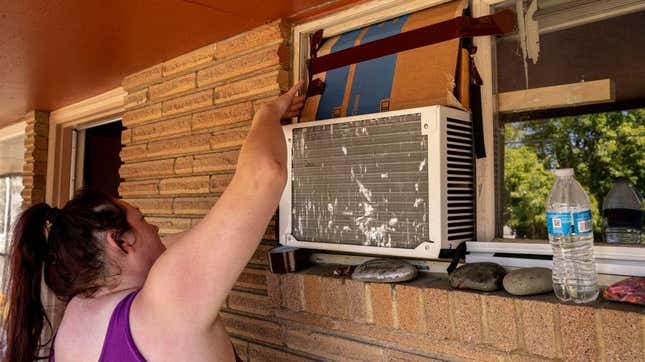
The U.S. has seen several waves of dangerous heat this year, and extreme high temperatures are set to become more regular by the middle of this century. Researchers are warning about a future “heat belt” that will stretch from Texas up to Wisconsin, where people will regularly be exposed to stretches of heat index above 100 degrees Fahrenheit (38 degrees Celsius) as well as less frequent but still terrifying days above 125 degrees Fahrenheit (52 degrees Celsius)
A report released Monday by research group First Street Foundation found that a huge column of the country could see a major increase in “extreme heat” summer days by the year 2053. Large sections of the middle of the country will experience a heat index of more than 125 degrees Fahrenheit (52 degrees Celsius).
Dangerously high heat indexes above 125 degrees Fahrenheit have impacted about 8 million Americans this year, but that number will rise to 107 million people by the middle of the century, according to this model. The future heat belt would cover several major cities, including Chicago, Tulsa, St. Louis, and Kansas City.

These projections are based on First Street’s extreme heat model, which looks at factors like surface temperatures, an area’s proximity to water, and tree cover. The model factors in how those variables affect temperature alongside data about current high temperatures. It assumes a middle-of-the-road future emissions scenario, in which greenhouse gas emissions peak in 2040 and then begin to decline. First Street researchers focused on heat index, of the “feels like” temperature, which is affected by humidity—the more humid it is, the harder it is to stay cool. The combination of rising temperatures and humidity will make it unbearable for people to be outside. With the new report, the First Street Foundation also updated its Risk Factor tool. Users can plug in their address to see if their community is going to see a rise in heat, flood, and fire risks in the next 30 years.

The American Midwest will be so badly affected by heat because it is landlocked and there are no bodies of water large enough to help mitigate the temperature spikes. That doesn’t mean that the states along the coasts and the Gulf will be spared; areas across the coastal Mid-Atlantic and Southeast will experience higher heat indexes, too.
Heat waves will change over time as well, according to the report. As of today, areas of Southeastern Atlantic Coast and the Gulf experience about 100 days a year of heat index above 100 degrees Fahrenheit (38 degrees Celsius). By 2053, it’ll be an average of 120 days, the model projects. Days of consecutive heat will increase, too: Swathes of Texas, Arizona, and Florida could see 74 consecutive days above 100 F per year by mid-century. That means little respite for people in urban heat islands across the U.S., and especially for people experiencing homelessness who have little access to resources for staying cool.
More days of extreme heat are expected as Earth warms; if we fail to limit warming to under 2 degrees Celsius, heat will be one of the many ways that humans will suffer terribly due to an altered global climate, as the Intergovernmental Panel on Climate Change outlined in a major report earlier this year.